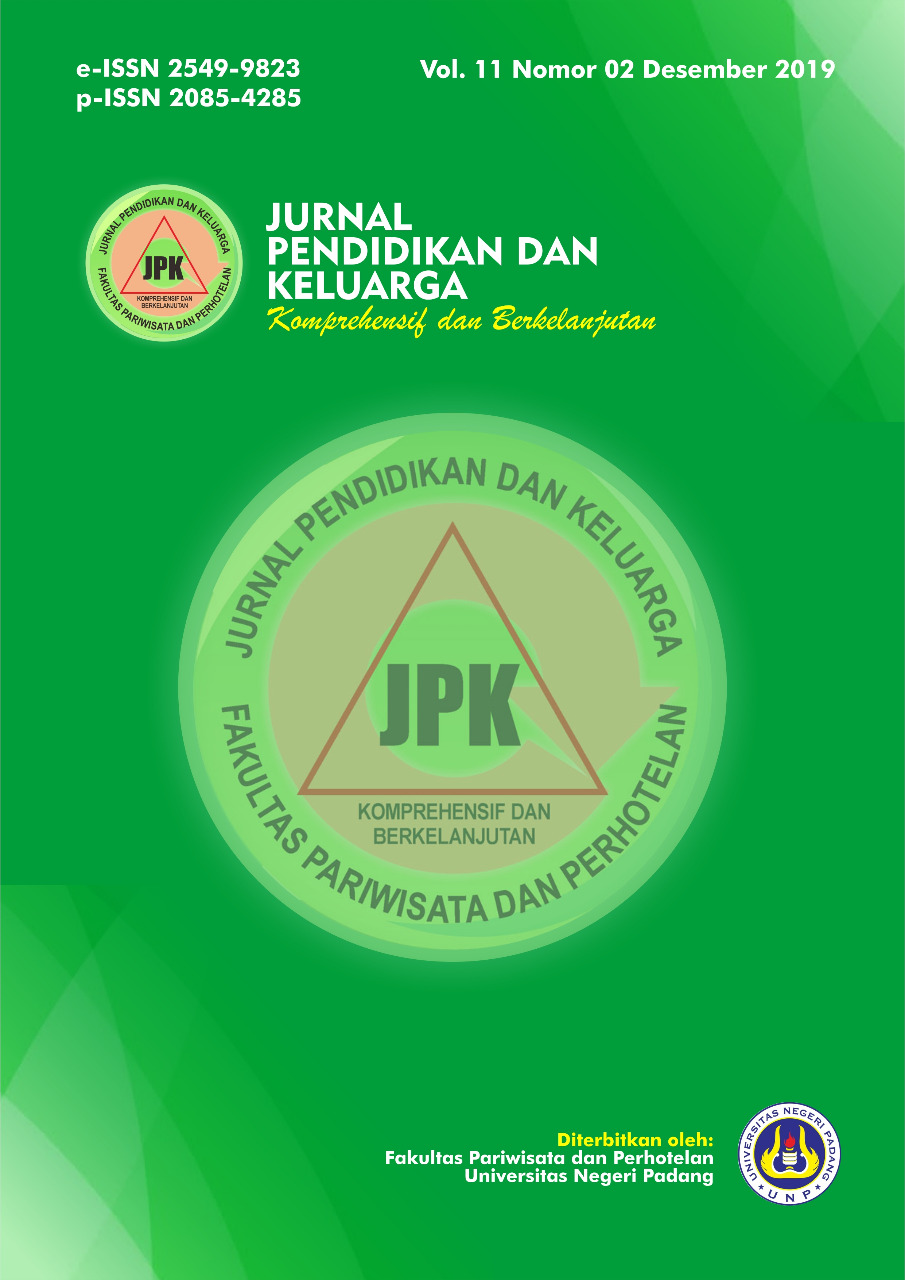Perbedaan Hasil Pencelupan Bahan Sutera Menggunakan Ekstrak Kulit Pisang Kepok dengan Mordan Tawas dan Kapur Sirih.
Main Article Content
Abstract
Abstract
This research is motivated as an effort to reduce the problem of environmental pollution by re-using natural dyes. The natural dyes used are the utilization of waste which is kepok banana peel. The purpose of this study is to describe the name of the color (hue), dark light (value), and evenness of color as well as differences in mordan alum and whiting to the results of dyeing silk material using kapok banana peel extract (MusaParadisiaca L). This type of research is experimental research. Data collection techniques using a questionnaire (questionnaire) from 18 panelists. The data analysis technique was carried out using the Friedman K-related sample test technique and using the SPSS (Statistical Product and Service Solution) version 16.0 application. Dipping silk material with Kepok Banana peel extract (MusaParadisiaca L) without mordan yielding a Wheat Light Brown color with Code # F6E7B0 and value category very bright and evenness of color in the very flat category. In dyeing with mordan alum produces Light Brown color with code # E7BE75 with light category and flatness value in the flat category, while in dyeing with mordan whiting the color name is Golden Sundanese with code # D7A04F with the value of the category light enough and flat for the category flatness. Friedman K-related sample test results obtained for light dark color (value) is 0.001 <0.05, then H0 is rejected, meaning that there are significant color differences. Whereas the color density of the data obtained was 0.154> 0.05, H0 was accepted, meaning that there was no significant difference in color evenness in the dyeing of silk material using Kepok banana peel extract (MusaParadisiaca L) with mordan alum and whiting.
Keywords: mordan alum and betel lime, kepok banana peel (Musa Paradisiaca L), silk material
Article Details

This work is licensed under a Creative Commons Attribution 4.0 International License.

Jurnal Pendidikan dan Keluarga is an Open Access Journal. The authors who publish the manuscript in this journal agree to the terms of Lisensi Creative Commons Atribusi 4.0 Internasional. This permits anyone to copy, redistribute, remix, transmit and adapt the work provided the original work and source is appropriately cited. This means: (1) Under the CC-BY license, authors retain ownership of the copyright for their article, but authors grant others permission to use the content of publications in Jurnal Pendidikan dan Keluarga in whole or in part provided that the original work is properly cited. Users (redistributors) of Jurnal Pendidikan dan Keluarga are required to cite the original source, including the author's names, Jurnal Pendidikan dan Keluarga as the initial source of publication, year of publication, volume number, issue, and Digital Object Identifier (DOI); (2) Authors grant Jurnal Pendidikan dan Keluarga the right of first publication. Although authors remain the copyright owner.
